Wolstenholme Towne: Lost Virginia Settlement – Destroyed, Abandoned And Forgotten
A. Sutherland - AncientPages.com - Usually, when a site was occupied for a short time before it was attacked and destroyed, it can act as a "time capsule," which provides archaeologists with several important pieces of evidence in the form of artifacts related only to this particular place.
Credit: Adobe Stock - QatlasMap
Wolstenholme Towne is one such place near Williamsburg, Virginia, United States.
The town was wiped out by the Indians in 1622 and left forgotten for almost four centuries.
In the 1970s, Ivor Noël Hume, a British-born archaeologist in the United States and one of the founders of historical archaeology in North America, searched for signs of another, later 18th-century plantation of Carter Grove.
He unexpectedly discovered a face-covering helmet from a suit of armor and other remnants of a fortified town, Wolstenholme, built about 1620.
The discovery resulted in many excavations at the site and gave insights into the daily life of people in this short-lived settlement. Wolstenholme Towne was only occupied for a few years before it was attacked, destroyed, and abandoned.
It was the central town of Martin's Hundred, a plantation occupying more than 20,000 acres and one of many private British plantations established in the early 17th century.
The colony was established in 1619 on the James River by about 200 settlers, who called themselves "Martin's Hundred." They settled 10 miles down the river and named their settlement - Wolstenholme Towne.
Unfortunately, the Towne and its people did not survive. On March 22, 1622, over half of the settlers were massacred in a significant Indian uprising.
A few survivors and some new settlers attempted to rebuild the site, but the disease took its toll, and the place was abandoned and long forgotten. Part of it has probably been washed away by the James River. Some surviving historical documents shed some light on the settlement and its inhabitants.
According to records, excavations of the site that began in 1977 revealed information about storehouses, dwellings, and a timber fort. Many British and European artifacts of the 17th century were unearthed at the site and later brought to America.
They include pottery, armor, weapons (iron helmets), and many domestic and agricultural items. The excavations have revealed the graves of forty-eight settlers, some of them hastily buried after the massacre; others were buried in coffins with gabled lids, similar to English coffins dated to the same period.
The findings confirm the tragedy that happened there at Wolstenholme Towne.
Updated on December 9, 2021
Written by – A. Sutherland AncientPages.com Staff Writer
Updated on December 7, 2022
Copyright © AncientPages.com All rights reserved. This material may not be published, broadcast, rewritten or redistributed in whole or part without the express written permission of AncientPages.com
Expand for referencesMore From Ancient Pages
-
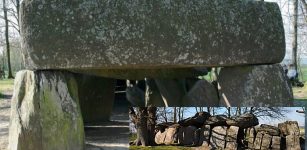 Mysterious Huge Neolithic Dolmen Roche-aux-Fées In Brittany Built By The Fairies As Legend Says
Featured Stories | Sep 25, 2022
Mysterious Huge Neolithic Dolmen Roche-aux-Fées In Brittany Built By The Fairies As Legend Says
Featured Stories | Sep 25, 2022 -
 Ghostly Appearance Of Weird Ancient City Suspended In The Sky Witnessed By Many People
Featured Stories | Jul 9, 2019
Ghostly Appearance Of Weird Ancient City Suspended In The Sky Witnessed By Many People
Featured Stories | Jul 9, 2019 -
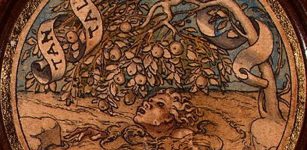 Tantalus – Greek King And Evildoer Who Violated Divine Laws And Was Sent To Tartarus
Featured Stories | Mar 1, 2019
Tantalus – Greek King And Evildoer Who Violated Divine Laws And Was Sent To Tartarus
Featured Stories | Mar 1, 2019 -
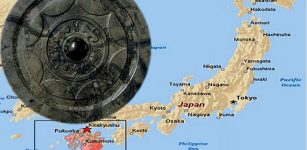 Remarkably Well-Preserved 1,900-Year-Old Chinese Bronze Mirror Unearthed In Japan
Archaeology | Dec 29, 2017
Remarkably Well-Preserved 1,900-Year-Old Chinese Bronze Mirror Unearthed In Japan
Archaeology | Dec 29, 2017 -
 The Great Pyramid And Ancient Egyptian Knowledge Shed Light On Biblical Mysteries – Resurrection Of The Flesh – Part 1
Featured Stories | Nov 25, 2019
The Great Pyramid And Ancient Egyptian Knowledge Shed Light On Biblical Mysteries – Resurrection Of The Flesh – Part 1
Featured Stories | Nov 25, 2019 -
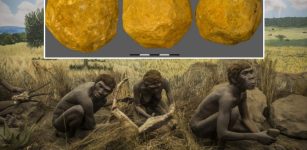 Are The Mysterious ‘Ubeidiya Limestone Spheroids Of Early Hominins Evidence Of Intentional Symmetric Geometry?
Archaeology | Sep 6, 2023
Are The Mysterious ‘Ubeidiya Limestone Spheroids Of Early Hominins Evidence Of Intentional Symmetric Geometry?
Archaeology | Sep 6, 2023 -
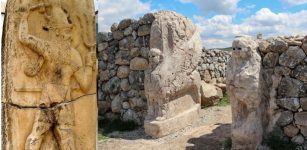 Drought Accelerated Hittite Empire Collapse – New Study Suggests
Archaeology | Feb 12, 2023
Drought Accelerated Hittite Empire Collapse – New Study Suggests
Archaeology | Feb 12, 2023 -
 Pharaoh Hor Aha – 1st Dynasty Ruler Of Ancient Egypt Who Founded The City Of Memphis And May Have Been The Legendary Menes
Featured Stories | Jun 23, 2018
Pharaoh Hor Aha – 1st Dynasty Ruler Of Ancient Egypt Who Founded The City Of Memphis And May Have Been The Legendary Menes
Featured Stories | Jun 23, 2018 -
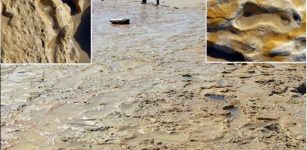 Recently Found ‘Neanderthal Footprints’ In the South Of Spain Could Be 275,000 Years Old
Featured Stories | Dec 1, 2022
Recently Found ‘Neanderthal Footprints’ In the South Of Spain Could Be 275,000 Years Old
Featured Stories | Dec 1, 2022 -
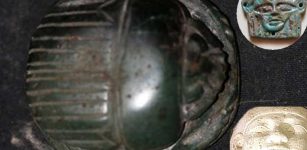 Amulets, Figurines Discovered In Recently Unearthed Limestone Sarcophagus In Minya, Egypt
Archaeology | Oct 15, 2020
Amulets, Figurines Discovered In Recently Unearthed Limestone Sarcophagus In Minya, Egypt
Archaeology | Oct 15, 2020 -
 Young Girl Finds Rare Ancient Megalodon Shark Tooth On Maryland Beach
Archaeology | Jan 16, 2023
Young Girl Finds Rare Ancient Megalodon Shark Tooth On Maryland Beach
Archaeology | Jan 16, 2023 -
 Unique 1,000-Year-Old Medieval Golden Treasure Unearthed By Dutch Historian Using Metal Detector
Archaeology | Mar 24, 2023
Unique 1,000-Year-Old Medieval Golden Treasure Unearthed By Dutch Historian Using Metal Detector
Archaeology | Mar 24, 2023 -
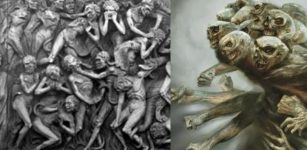 Utukku: Sumerian Spirit From The Underground That Obeyed The Will Of God Anu
Featured Stories | Jun 17, 2016
Utukku: Sumerian Spirit From The Underground That Obeyed The Will Of God Anu
Featured Stories | Jun 17, 2016 -
 Napta Playa – Egypt’s Stonehenge And Its Ancient Astronomical Alignments
Featured Stories | Feb 18, 2018
Napta Playa – Egypt’s Stonehenge And Its Ancient Astronomical Alignments
Featured Stories | Feb 18, 2018 -
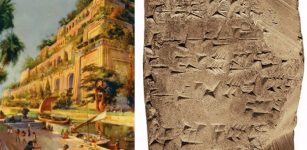 Modern Banking Concept Started In Ancient Babylonian Temples
Ancient History Facts | Mar 7, 2016
Modern Banking Concept Started In Ancient Babylonian Temples
Ancient History Facts | Mar 7, 2016 -
 Ancient Mystery Of The Man Mound And The Giant With Horns In Wisconsin
Featured Stories | Mar 1, 2021
Ancient Mystery Of The Man Mound And The Giant With Horns In Wisconsin
Featured Stories | Mar 1, 2021 -
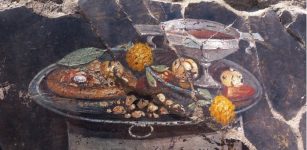 Ancestor Of Italian Pizza Depicted On Fresco In Pompeii
Archaeology | Jun 28, 2023
Ancestor Of Italian Pizza Depicted On Fresco In Pompeii
Archaeology | Jun 28, 2023 -
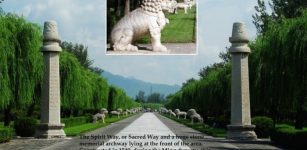 Amazing Thirteen Ming Tombs: Gigantic Stone Animals And Human Figures Were Symbols Of Royal Power
Civilizations | Oct 1, 2018
Amazing Thirteen Ming Tombs: Gigantic Stone Animals And Human Figures Were Symbols Of Royal Power
Civilizations | Oct 1, 2018 -
 Exceptionally Long-Lived Ancient Form Of Hydraulic Engineering Unearthed In The Nile Valley
Archaeology | Jun 13, 2023
Exceptionally Long-Lived Ancient Form Of Hydraulic Engineering Unearthed In The Nile Valley
Archaeology | Jun 13, 2023 -
 Susanoo-no-Mikoto – Shinto God Of The Sea And Storms Was Banished From Heaven
Featured Stories | Nov 23, 2018
Susanoo-no-Mikoto – Shinto God Of The Sea And Storms Was Banished From Heaven
Featured Stories | Nov 23, 2018

